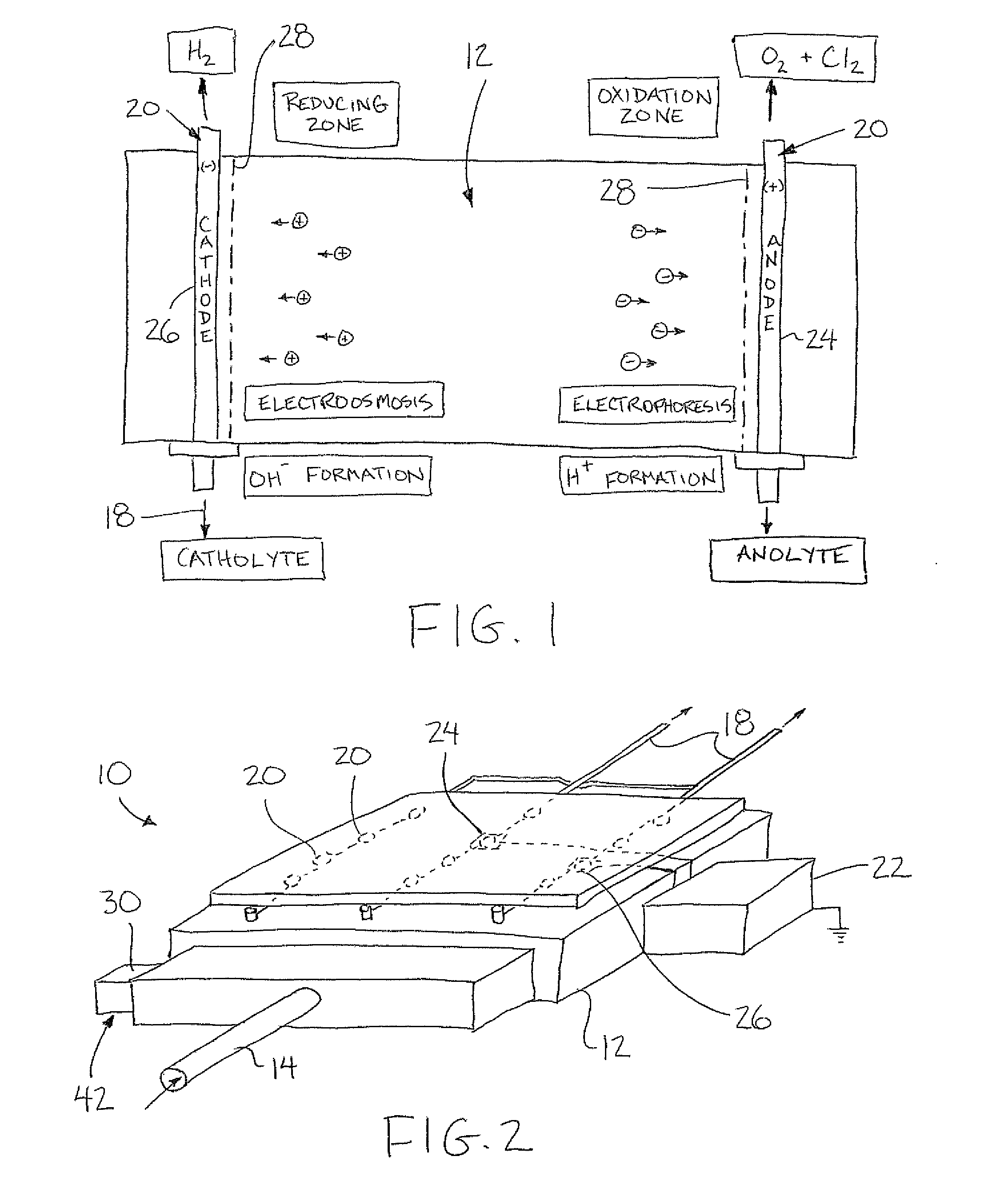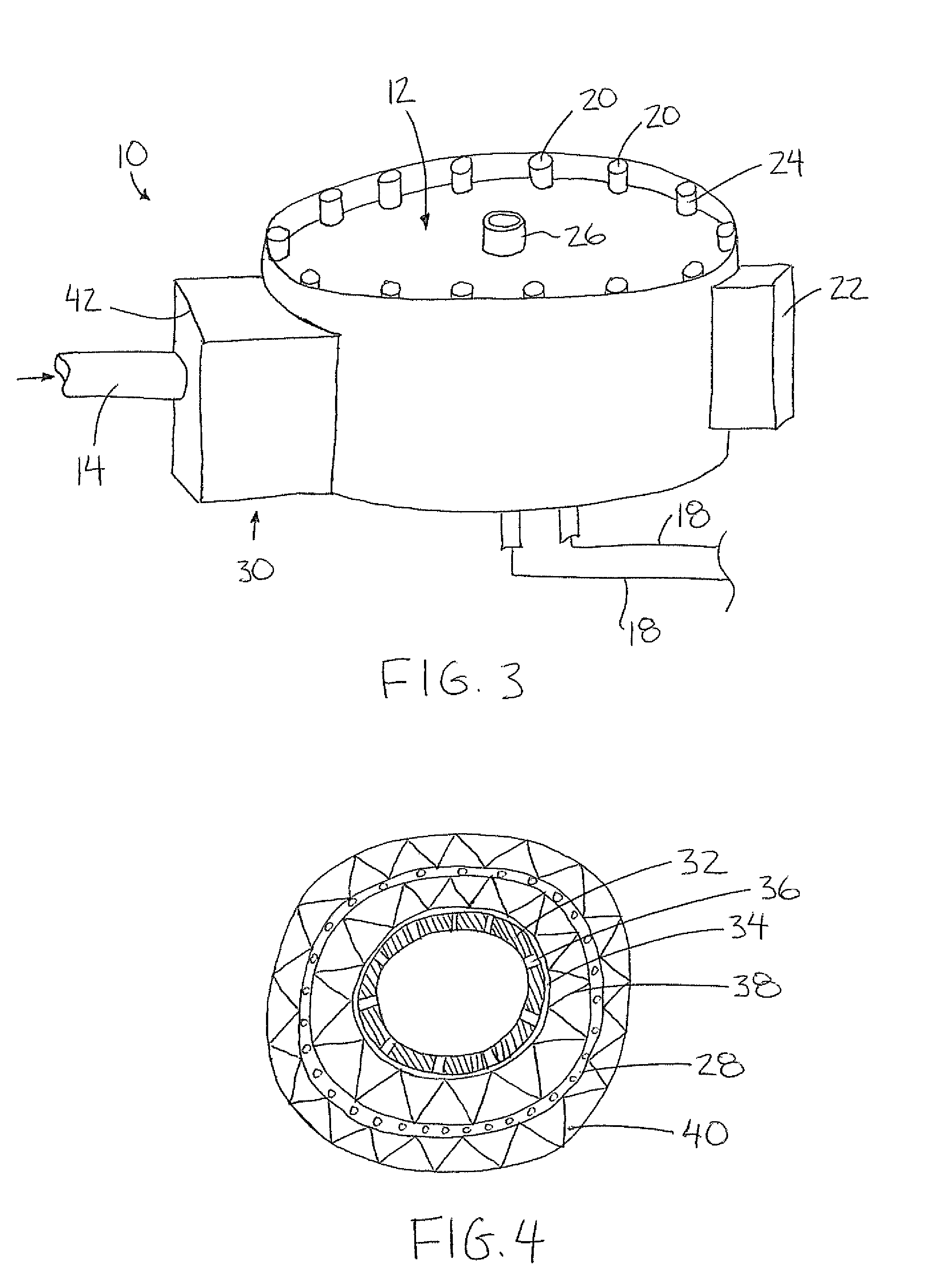Method of Treating Sludge Material Using Electrokinetics
a technology of electrokinetics and sludge, applied in water/sewage treatment by ion exchange, water treatment compounds, separation processes, etc., can solve the problems of inability to utilize biosolids containing excessive heavy metals, inability to often used dewatering techniques that do not improve the chemical composition of biosolids, etc., to achieve the effect of more efficient electrical field distribution
- Summary
- Abstract
- Description
- Claims
- Application Information
AI Technical Summary
Benefits of technology
Problems solved by technology
Method used
Image
Examples
Embodiment Construction
[0093]Referring to the accompanying figures there is illustrated a sludge treatment system generally indicated by reference numeral 10. Although various embodiments of the system are described in the following, the common features of each will first be described herein.
[0094]The system 10 comprises a treatment chamber 12 arranged to receive the sludge material to be treated therein. The treatment chamber 12 includes a sludge inlet 14 through which the sludge is introduced into the chamber, and a treated sludge outlet 16 from which the dewatered and treated sludge is arranged to be removed from the chamber. Also provided is an effluent outlet 18 from which the water removed from the sludge 14 is received for removal from the treatment chamber 12.
[0095]A plurality of electrodes 20 are supported within the chamber 12 so as to be arranged to communicate with the sludge in the chamber. A suitable power supply 22 is coupled to the electrodes so as to apply an electrical potential differen...
PUM
| Property | Measurement | Unit |
|---|---|---|
| Temperature | aaaaa | aaaaa |
| Flow rate | aaaaa | aaaaa |
| Solubility (mass) | aaaaa | aaaaa |
Abstract
Description
Claims
Application Information
 Login to View More
Login to View More - R&D Engineer
- R&D Manager
- IP Professional
- Industry Leading Data Capabilities
- Powerful AI technology
- Patent DNA Extraction
Browse by: Latest US Patents, China's latest patents, Technical Efficacy Thesaurus, Application Domain, Technology Topic, Popular Technical Reports.
© 2024 PatSnap. All rights reserved.Legal|Privacy policy|Modern Slavery Act Transparency Statement|Sitemap|About US| Contact US: help@patsnap.com










